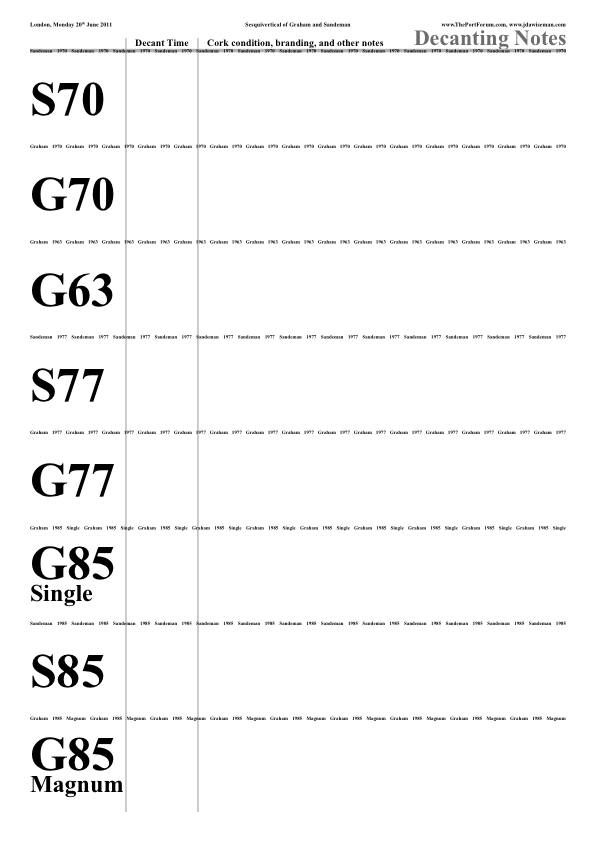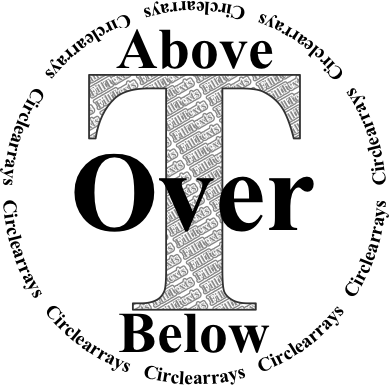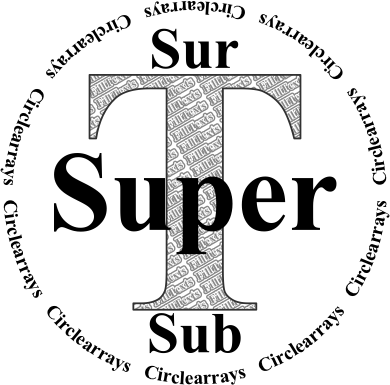Re: Software that makes placemats
Posted: 10:12 Sun 19 Dec 2010
At The Bell, for the Christmas tasting on 16 December 2010, for the first time, glass stickers were used rather than placemats. At the Bell glasses and space is tight, there just not being space for each person to use three pages of A4 of table.
The following quotations all come from the review thread.
It would be relative easy to add boolean flags that produce one sticker per glass per person, with some number of extra blank people, and that the Names loop be outermost. This would put all of each person’s stickers on the same page, except those who crossed a page boundary. Extra boolean controls could prohibit crossing page boundaries. But this could still be difficult to cut, as roughly illustrated in the following text diagram, in which the people are A, B, C, etc.(If boundary-crossing is prohibited pages would look like the left of these, with the last row empty.)
The cutting would have awkward 90° turns. Better suggestions welcomed.
The following quotations all come from the review thread.
jdaw1 wrote:This was the first placemat-free tasting, with glasses being identified with stickers. Feedback welcomed.
uncle tom wrote:Stickers for glasses works really well, except that we need one sheet of stickers person (or per two people) as we were constantly passing the sheets around and trying to find our respective labels - at one point [somebody] put one of his on his forehead so he could find it later!
jdaw1 wrote:Problems:
- At the time the PDF is made, it isn’t yet known who will be sitting next to whom.
- One sheet has 65 stickers, so one sheet per person would waste two-thirds to three-quarters of each sheet.
WS1 wrote:Indeed one sheet per person would be too much waste; but would it be possible to slot the stickers of two or three people on equal sections onto one sheet (each person has ~20 stickers)? They could be after printing cut into the portions of the individual person.
The glass stickers were also rather hackerish to produce, so some improvement to the code is required.JacobH wrote:The stickers also worked extremely well; thanks Julian. As Wolfgang suggested, the only improvement would be to have each person’s stickers as a block so they could be cut up and distributed before the tasting starts. Also, for blind tastings it might be nice if the number took up only half the sticker so that we can write the name of the wine in when revealed.
It would be relative easy to add boolean flags that produce one sticker per glass per person, with some number of extra blank people, and that the Names loop be outermost. This would put all of each person’s stickers on the same page, except those who crossed a page boundary. Extra boolean controls could prohibit crossing page boundaries. But this could still be difficult to cut, as roughly illustrated in the following text diagram, in which the people are A, B, C, etc.
Code: Select all
AAAAA FFFFF
AAAAA FFGGG
AABBB GGGGG
BBBBB GGGGH
BBBBC HHHHH
CCCCC HHHHH
CCCCC HIIII
CDDDD IIIII
DDDDD IIIJJ
DDDEE JJJJJ
EEEEE JJJJJ
EEEEE KKKKK
FFFFF KKKKKThe cutting would have awkward 90° turns. Better suggestions welcomed.


